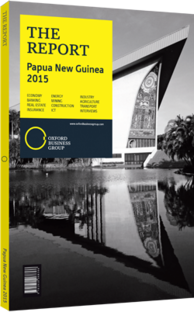Jonathan Seeto, Managing Partner, PwC: Viewpoint

Viewpoint: Jonathan Seeto
With GDP growth for 2015 initially forecast as high as 21% but now projected at closer to 9%, there is a much more sobering view of short-term growth prospects for businesses in PNG. These sentiments have been shaped by some interesting turns in the business landscape over the last 12 months – not least, the fall in global oil and mineral prices that has caused a large decrease in government revenues. Many businesses are now pondering what the future holds for them in PNG.
From the start of 2015, there were clear signs of a changing outlook that required businesses to respond in a different way. The impact of lower oil prices on state revenues was the start of ongoing chatter about the economic outlook. We also continued to see businesses grappling with the new foreign exchange trading regime – the Bank of PNG introduced a “trading band” requiring commercial banks to trade within a prescribed range around the interbank rate, resulting in an immediate appreciation in the value of the kina.
This intervention was in part to reduce inflationary pressure caused by the declining value of the kina from the drop in export revenues and continuing high import demand. However, the main impact on business has been on the availability of foreign currency with which they could readily transact. We then continued to observe growing concern from many quarters about the sustainability of planned government spending in light of revenues. For example, it seems that fiscal imbalance and event vulnerability are key factors in Moody’s changing its credit rating for PNG to a negative outlook. All these events have shaped confidence levels and ongoing debate about the budget deficit, country liquidity and the future direction of business growth.
That said, there have recently been many positive indicators, such as: more forward momentum on the ElkAntelope project, with project appraisals under way and site selections confirmed; announcements that Wafi-Golpu would complete feasibility studies by the end of 2015; Sime Darby extending its footprint in PNG through its majority acquisition of New Britain Palm Oil; Guangdong Rising Asset Management signalling its intention to move forward with a feasibility study on Frieda River; Anglo American and Zijin Mining’s entrance into the PNG mining sector for the first time; Bank South Pacific increasing its foothold across the Pacific; Kina Securities going public in Australia and PNG; and many other localised benefits, especially in the construction sector as PNG prepared to host the Pacific Games. This continually changing landscape, including the number of deals taking place in the market, tells us that while some sectors and businesses may appear less positive in the current climate, for others PNG continues to provide real opportunities for growth and investment, if not for now, then certainly for the future.
On business performance, 2015 is clearly a more difficult year for most companies. Put in context, the challenge for many is being realistic about the type of growth businesses have been experiencing over the last several years and about what is achievable now. Viewed through a global lens, businesses continue to perform fairly well. While growth has slowed, net income margins remain good compared to other markets, though they are potentially at risk in the short term.
The immediate challenge for businesses is to recognise that there is a clear change in the market outlook for now, and that they have to do things differently. They have to dig deeper for opportunities, be more responsive to customers, be prepared to re-organise or change their business models, and do more with less. Taking cost out of the business is important, but a sustainable recipe for success requires ongoing investment in the right places, innovation and disruption of old paradigms. The more successful companies are seeing opportunities and connecting emerging trends with innovative solutions. What they are doing differently is changing things up with new strategies, renewing human capital investment and ridding their teams of those who are unprepared to innovate – bringing in expertise to ensure analytical rigour, but also testing their ideas and creativity, while leveraging technology.
You have reached the limit of premium articles you can view for free.
Choose from the options below to purchase print or digital editions of our Reports. You can also purchase a website subscription giving you unlimited access to all of our Reports online for 12 months.
If you have already purchased this Report or have a website subscription, please login to continue.

